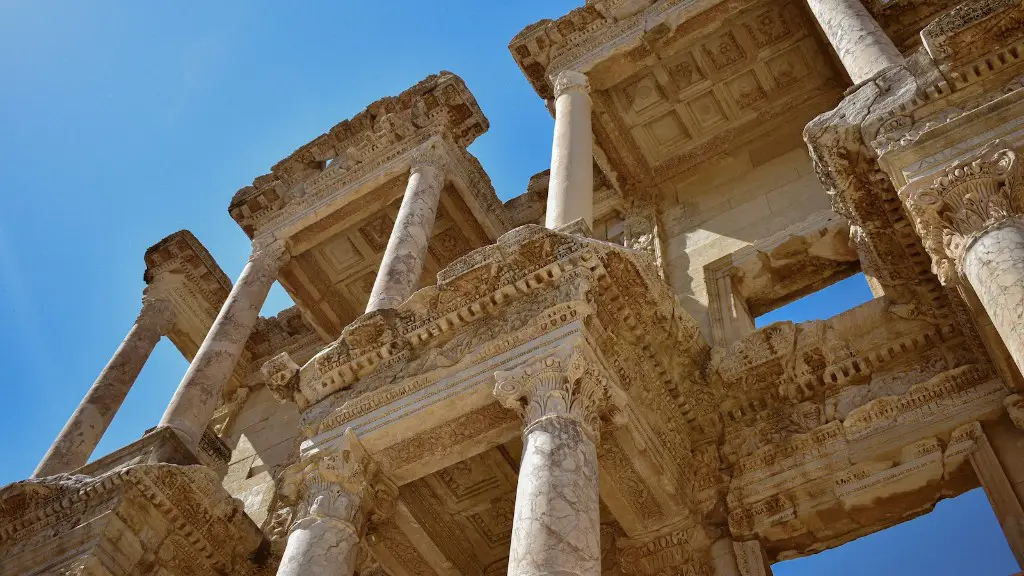In ancient Rome, gladiators were revered warriors, experts in combat and highly skilled at entertaining spectators in the Colosseum. For years, they were the ultimate warriors, idolized both by the rich and poor alike. Gladiators were an essential part of ancient Roman society, providing entertainment to the masses and even being symbols of reverence. But what was a gladiator in ancient Rome?
In order to answer this question, it’s important to first understand what a gladiator was not – slaves or prisoners of war. Instead, gladiators were generally free citizens of Rome who had voluntarily chosen to be trained in combat and take part in fights in arenas such as the Colosseum. It was considered to be an honorable profession and some gladiators even achieved wealth and fame.
The goal of a gladiator was to outlast his opponent and make an impressive show of his skills in the battlefield, to the delight of the crowd. They had to be expertly trained in various weapons and tactics, as well as maintain a level of fitness that allowed them to endure long periods of combat. Gladiators had access to a variety of weapons and armor, ranging from swords, spears, and shields to tridents, nets, and bows. Different types of gladiators were also used, including ones specializing in hand-to-hand combat and others with missile weapons.
In order to survive in the arena, gladiators had to be mentally and physically fit. They had to be able to think on their feet and react swiftly to their opponents. Gladiators could not rely solely on their physical strength and agility. Having a strong strategy and honed skills were the key to success. In addition to training, gladiators would also use charms, drugs, and rituals for luck, as well as psychological tricks to unnerve their opponents.
Gladiators were divided into different classes depending on their equipment, tactics, and proficiency. The most feared gladiators were the retiarii, armed only with a net and a trident and considered to be the deadliest fighters in the arena. Equally famous were the murmillo, tall and heavily armored fighters, and the thraex, those armed with a spear and shield.
The life of a gladiator was filled with glory, prestige, and danger. Although gladiators had a chance to win fame and fortune, their life expectancy was short, with most dying young due to injury or exhaustion in the arena. Gladiators were also viewed as expendable commodities, to be traded, bought and sold as property.
Role of Gladiators in Ancient Roman Culture
Gladiators had a major impact on ancient Roman culture. They were powerful symbols of strength and courage, and the fighters were revered and regarded as heroes. Gladiators were also iconic figures in Roman art and literature, appearing in mosaics and statues across the empire, as well as in the writings of numerous authors. Gladiatorial games were also a large part of Roman society. In addition to being proven grounds of contests between skilled warriors, they were also a form of entertainment and political theatre, with rulers often using them to curry favor with their people.
The games were immensely popular, with people travelling from all corners of the empire to witness them. The most popular gladiators were those who had achieved celebrity status, with wealthy nobles and emperors commissioning their own fighters to battle opponents at high-profile events. Gladiatorial games in ancient Rome could last anywhere from an hour to a few days, and there were often brief interludes between battles with musicians, dancers, and actors performing for the crowd.
Today, gladiators continue to fascinate people from around the world. Films and television shows bring to life the world of the gladiators, and reinterpret their struggles, battles, and triumphs for a new audience. What was a gladiator in ancient Rome is a question that still resonates today, demonstrating the enduring legacy of these powerful symbols of strength, courage, and honor.
Weapons and Armor of the Gladiators
The weapons and armor of the gladiators varied widely. The most common equipment included swords, spears, and shields, although there were also those who fought with tridents, bows, slings, nets, and other weapons. Each fighter’s equipment was tailored to their individual style, with some fighters wearing armor while others went without. All gladiators were also equipped with a helmet, a padded or leather-covered cuirass, and greaves on their lower legs.
The weapons and armor used by the gladiators were heavily contested. Arena combat was often incredibly brutal and dangerous, and the gladiator’s equipment had to be able to withstand all sorts of blows, impacts, and potential injuries. Equipment had to not only protect the fighters but also enable them to perform effectively and look impressive. For this reason, the weapons and armor used by the gladiators evolved over time, with innovative, lighter, and more effective designs being developed as the years passed.
The weapons and armor of the gladiators remain a source of fascination today, with museums and archaeological sites being dedicated to them. Many of the weapons and pieces of armor used by the gladiators in ancient Rome have survived over the centuries, allowing people to learn more about their fascinating history.
Gladiatorial Fights and Trainings
There are numerous accounts of gladiatorial fights, training, and rituals from ancient Rome. One of the most detailed is from the Roman author Suetonius, who wrote about the gladiators he saw in action. According to Suetonius, gladiatorial fights usually began with prayers and offerings to the gods, after which the gladiators fought with real weapons. They typically fought in pairs, and the aim was for one to kill the other. There were also fights to the death and chariot races, which were very popular.
The training and preparation of the gladiators was highly regulated. According to Suetonius, the gladiators had strict diets and rigorous exercises that they followed in order to stay in peak physical condition. They also trained in simulated battles, and were put through various tests of courage, such as being subjected to lions and boars. Suetonius also mentions that gladiators would use certain charms and rituals in order to bring them luck before entering the arena.
Gladiatorial fights were extremely popular in ancient Rome, with people from all classes flocking to the arenas to witness them. They weren’t just a form of entertainment, however, but also a sign of social status, with wealthy Romans commissioning their own gladiators for their games.
Gladiators in Popular Culture
The legacy of the gladiators is still alive in popular culture today. Gladiators are featured in a variety of mediums, from books and movies to television and video games. The Gladiator issue is explored in a variety of historical documentaries and fiction films, bringing the world of the gladiators to life once more.
The attraction to gladiators is still strong. They continue to be seen as symbols of strength, courage, and honor, and remain a source of fascination for many. Their tale of bravery and courage has inspired many, and it appears as if the legacy of the gladiators will continue to live on.
Gladiators in Ancient Art and Literature
Gladiators were a ubiquitous presence in Roman art and literature. They appeared in mosaics, frescoes, statues, and jewelry, as well as in the writings of Pliny the Younger, Juvenal, Statius, and Homer. Gladiators were also a frequent subject in the works of Cicero, Virgil, and Ovid, among others.
Many of the surviving artworks depicting gladiators come from Pompeii and Herculaneum, with frescoes and wall paintings depicting gladiatorial matches as well as training exercises. The artworks provide a glimpse into what life was like for the gladiators, from their preparation in the arena to their death-defying battles.
In literature, gladiators are a recurrent theme in many authors, particularly the Roman poet Statius, who praised them in his work “Thebaid”. Gladiators were also referenced in the epics of Homer, as well as in plays and orations by Cicero and other writers. Gladiators also symbolized nobility and courage in literature, with some authors praising their bravery and heroism.
Conclusion
What was a gladiator in ancient Rome is a question that still resonates today. Gladiators were more than just warriors, but symbols of strength, courage, and honor. They provided entertainment to the masses and exemplified the power and skill of their swords, spears, and tactics in the arena. Gladiators were also revered in literature, art, and popular culture, with their legacy still being felt centuries after their demise.





